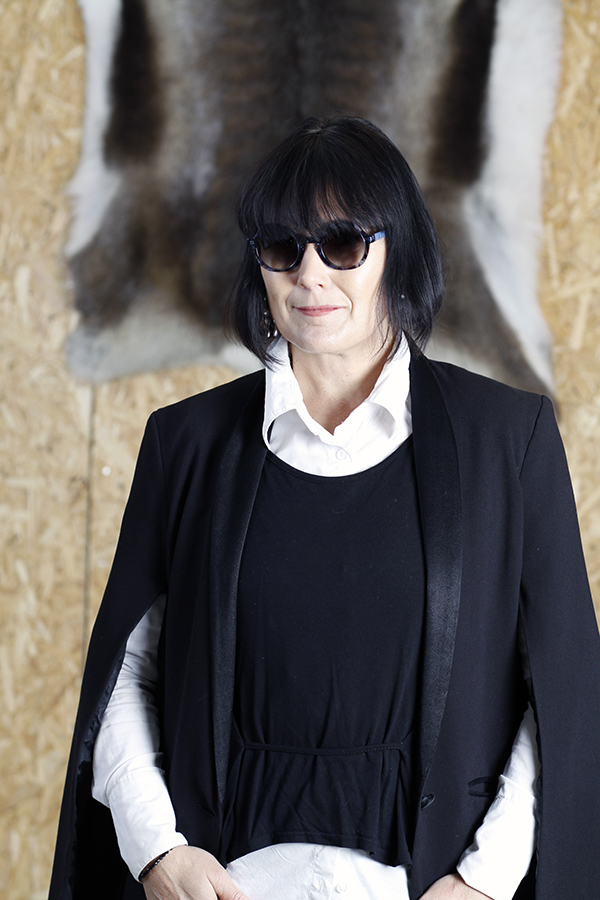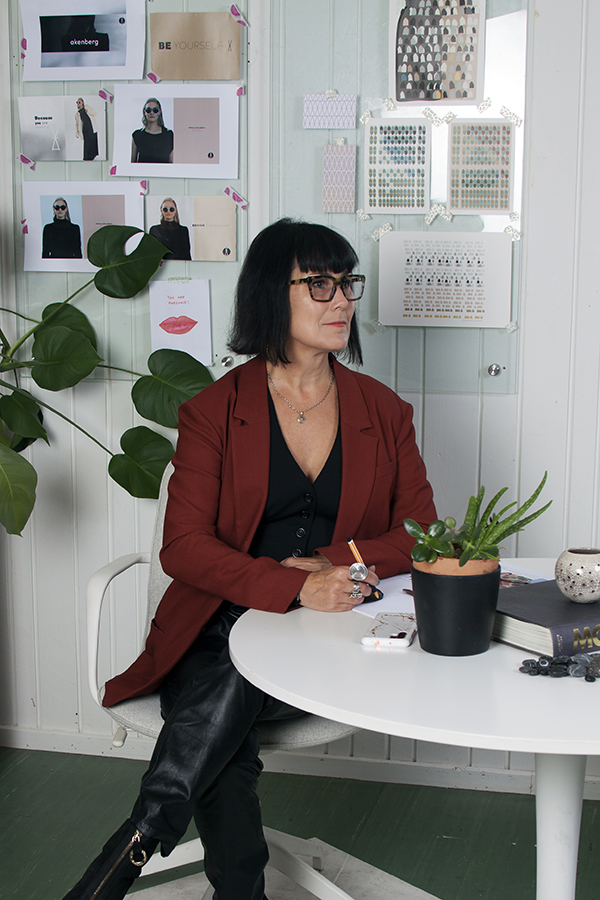Design matters
Meet our Creative Director Design AnnKathrin Lundqvist, on the whys and wherefores of design.
With almost 30 years’ experience from working within design in areas spanning from fashion to interior, AnnKathrin Lundqvist is the creative mind behind all that is Akenberg. As our Creative Director Design, she applies her distinct aesthetic to our array of sunglasses and accessories.
Growing up in the small village Bälinge in the north of Sweden, she got interested in design at an early age. At 19 she moved to California, USA, to first study arts and later attend the Fashion Institute of Design & Merchandising in San Francisco. From 1993 she worked as a designer in different roles with all parts of the creative processes.
As design more and more becomes an important – if not the most important – aspect when it comes to catching customers’ attention, it is always given priority at Akenberg, AnnKathrin explains.
– Working as a designer is about constantly challenging the existing, questioning why, and creating something brand new that expands our horizons. As a designer you also have a responsibility to make sure that your designs are environmentally friendly. New thinking is what drives the design process forward. Change and development is really the only thing that is constant, and through our design we want to explore how we form our opinions, our relationships and ourselves when change is the only constant in life.
What inspires you as a designer?
– The rugged Nordic nature is an infinite source of inspiration. I am also inspired by people I meet and places I come across, no matter if it is in the forest or in different cities. The quiet area of Luleå where I have my design studio, offers space and allows us to be creative. The clean air and the magnificent nature is great for new ideas and design elements, it can be how the wind has formed a pattern in the snow on the ground, or how the moss grows on an old log. In this Nordic region I also find lots of art, craftsmanship and history that is superb for inspiration and knowledge.
Why is design more important than ever?
– Because design matters. As a designer today, you need to have a better understanding of more than just the design process. Design is so much more than just the form, function and colour. You need to consider the process from idea to finished product, the whole lifecycle of a product, and you need to have a diverse set of skills and knowledge.
How can design have a greater impact on the society and our planet?
– Design can decide what environmental impact the product or service will have. We have been forced to shift our focus on what really matters. Crisis can really help us shift focus, where we are able to see things in new ways because everything we knew has changed. The more you put in your toolbox as a designer, to help you look at a problem or need from different angles, the better. If you consider life, nature, human psychology, cultures, materials, techniques, the better it is for the design process. If we as a society come together and start implementing diverse knowledge, science and innovation into our future, we can probably solve saving our planet.
How and where does your design process start?
– Designing a new collection is a step-by-step process. It always starts with a need. At Akenberg we do not want to design unnecessary objects. Each designed product must have a given place, a function and a purpose and stand out from the mainstream. Therefore, framing questions about its justification of existence is an important part throughout the process – its why. As mentioned, the nature is a great source of inspiration, so daily walks in the arctic landscape give me plenty of ideas that then are processed and moulded over and over again. Also, the material must be utilized to its full potential to ensure minimum waste. Working first with hand sketches and after that in a sophisticated design software combined with a 3D program, allows me to experiment during the design process, and to strengthen product visualization. Raw materials are limited on earth and truly something that we borrow from Mother Nature, so one has to make sure that the product is designed to last for a very long time – and that it is unique and eco-friendly. Uniqueness, durability and sustainability is my constant strive.
Can beautifully designed products also be highly functional?
– Definitely! If you take eyewear, for example, they have an absolute important function to protect your eyes and aid your eyesight. What’s more, they are also great accessories making the individual who wears them look unique and enhance his or her personality. A pair of spectacles, sunglasses or optical lenses is a very interesting product because of its relative magnitude and the huge impact it has on the person wearing them. The proportions are extremely interesting; although small in size, eyewear communicate with boldness. Also, because eyewear has an important function, being placed in your face, it is something that you both see and see through. And while clothes only showcase two-dimensionally, frames offer a three-dimensional design. Together they become a unity, allowing the bearer to fully explore and present their style and character.
How would you describe your own style?
– Minimalistic mixed with functionality. You could call it Scandinavian design with a twist. I love asymmetry, when unexpected cuts and shapes create that perfect imbalance. Although my wardrobe is predominantly black, you will also find colours like green, blue, brown, burgundy and rust, and also paler shades. To make an all-black outfit more interesting I combine different kinds of material and structures. But what really makes a look stand out are accessories. Having worked in the industry for so many years, my wardrobe is filled with clothes, shoes and accessories. Some great finds from the 80s to recent years that I combine with vintage pieces and clothes that I’ve designed for myself. I like high-quality clothes and timeless design since I want products to have a long-life cycle. I plan my purchases carefully to make sure that I can combine with what I already have in my closet. As for style icons, since I have lived a long life both studying art and design I have so many it is impossible to name all of them. What I love in a garment is great construction and fit.



